For the past nearly 50 million years the earth’s bees have naturally produced one of the most valuable foods on earth - honey. Honey and bee products have for thousands of years barely changed their taste, composition, healing and essential chemicals that make them an invaluable gift of nature. Honey as a source of food is entirely vegetable- derived.
Bees collect pollen from the stamens of flowers and nectar rich in fructose and glucose that makes a natural sweet final product. Endless are the benefits of honey, it is even a valuable assistant in sexual stamina. The easiest advice of specialists is to consume 1-2 tablespoons crystallized of honey 30-60 minutes before bedtime, which ensures greater sexual power and quality of love.
Bee honey is obtained from several species of honey bees. They collect nectar and other plant secretions and transform them, combining it with substances released from the body. The resulting product is suspended in wax honeycombs in the hive, where it dehydrates and matures. Beekeeping is the organized production of honey. It encourages overproduction of honey in the hive, so that surpluses may be withdrawn from it, without jeopardizing the bee colony.
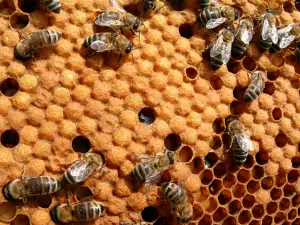
Composition of honey
Honey has an average of 300 Energy kcal per 100 grams of product.
Many studies confirm that the benefits of honey on human health are enormous. Honey has a beneficial influence on the physical state of a person, such as increased physical endurance. There are monosaccharides that are absorbed quickly and easily by humans. There are also trace elements, such as zinc, cobalt, copper, selenium, magnesium, iron, etc.
Culinary use of honey
Besides being useful, honey is delicious. It is used as a sweetener in tea and coffee, is a component of many delicious cakes and pastries. Honey on toast with butter is one of the most beloved and popular snacks. When heated, it loses some of its beneficial properties, so its direct consumption is recommended. It is used in glazes, fillings of sweets and the taste is loved by young and old.
Selection and storage of honey
Honey has several physical characteristics that are important in the selection of quality products. First is the taste, which should be slightly sweet and bitter. The taste is determined by the quantity of fructose, glucose and sucrose, but depends on the content of organic acids. The sweet taste of honey has approximately the same intensity as that of sugar due to the monosaccharides fructose and glucose.
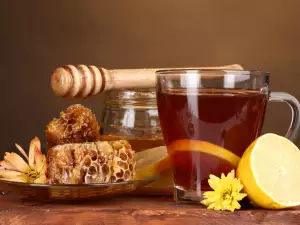
In the course of the fermentation process, honey gets a sour taste. The color of honey, depending on its origin, ranges from nearly colorless, to dark brown. Bright colors are found on the acacia, clover and repko honey types. Fresh honey is a thick, viscous and transparent mass, which gradually crystallizes to solidify. Some types of honey crystallize more slowly than others, or do not crystallize at all and other crystallize in the first days after centrifuging.
Even the best honey loses its properties when improperly stored. Keep the jar of honey in a cool dark place. The higher the temperature of the room, the faster the honey loses its properties. An ideal place for honey remains a dark refrigerator, or cupboard. Honey jars must be tightly closed, because it has the ability to absorb various odors.
Benefits of honey
The presence of vitamins of group B, which improves the nervous system and receptors, enhances the sensitivity of the skin and mucous membranes, sharpens our senses of smell and taste, while vitamin E is important for fertility and honey even offers vitamin A, vitamin C and others. It serves as a potent antioxidant and blocks the effects of toxic substances from the environment on the human body, such as the presence of hormone-like substances, the presence of pollen. If in need of more power, honey can be used 15 minutes - 30 minutes before getting set under pressure.
Moreover, if the need arises, it can be easily included in the metabolic processes that produce the energy needed for some activities. Crystallized natural bee honey is absorbed slowly by the body. Blood sugar rises more gradually and the level of energy that is produced is maintained for longer, but at a high level. The recommended daily intake for copper in most cases is 1 g/kg, which is divided into 2-3 doses.
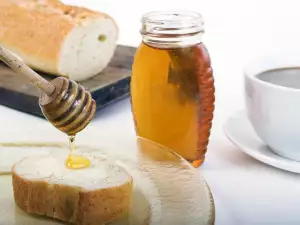
Honey and bee products have healing properties in many diseases, like diabetes, constipation, acne, avitaminosis, headaches, helps with smoking, toothache, ulcerative disease, cystitis, sinusitis, cancer of the cervix, colon cancer, breast cancer, and this is only a fraction of the diseases that honey affects favorably and assists in their treatment.
Honey bee products even help fight cellulite. The reason for this is the overall strengthening of the metabolic processes in the body, due to the intake of honey. Bee pollen is very effective in fighting cellulite. A simple recipe advises to put a teaspoon in a cup of yogurt and stir. Allow to sit for a night in the fridge. In the morning stir again. Have it on an empty stomach, half an hour before meals. In the morning, prepare another dose of the same. After standing in the refrigerator, it is taken at night on an empty stomach, at least half an hour before meals.
Honey is an irreplaceable biological remedy for combating constipation. It has pharmacodynamic effects, for making internal stimulate muscle tone, smooth muscle function, innervation of the gut and gastrointestinal secretion. The daily dose is 60 to 120 g crystallized honey, divided into several doses, bedtime intake is required. This amount is about 2 to 3 tablespoons of honey. According to Austrian experts, headaches can be successfully treated in 8 weeks with the adoption of two tablespoons of honey a day. Over the duration of the treatment, headaches disappeared or significantly reduced in 50% of patients.
Dangers of honey
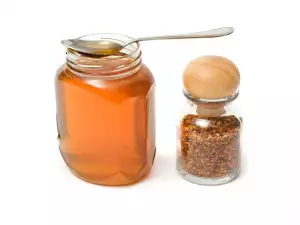
Few are the contraindications for the use of bee products as medicine. One is allergy. If in you ever ate honey, if a bee has stung you, and you have not had any major problems if you do not suffer from allergic diseases, or bronchial asthma, this largely means that you are not allergic to bee products. Another contraindication, which is not necessarily true, is diabetes mellitus.
Depending on the type of diabetes, age of the patient and their medical and laboratory controls, 50 g honey is acceptable (rich in fructose and trace elements) at the expense of other carbohydrates in the diet of patients, in 4 daily doses. There is evidence that fructose-rich honeys (acacia, sunflower) decrease insulin like other anti- diabetic drugs do.
It is not recommended to give honey to infants and children up to 1 year old, because their digestive system is immature and it can cause botulism.
Beauty with honey
Honey has been used for centuries to beautify. It enters into the composition of many masks, creams and shampoos. The sugar content makes it an excellent moisturizer that helps in hydration. Honey helps with hard skin acne.




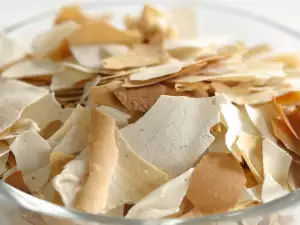
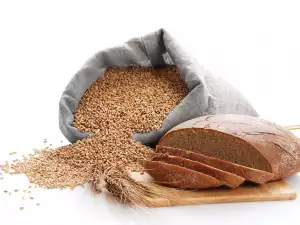

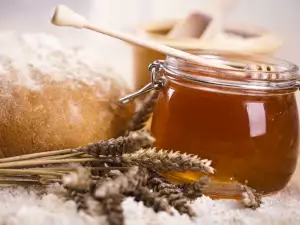


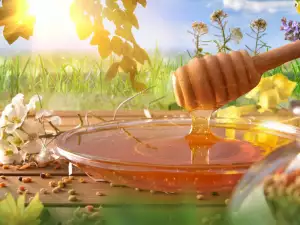
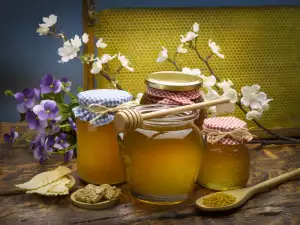

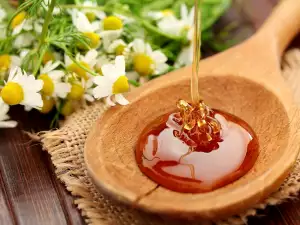
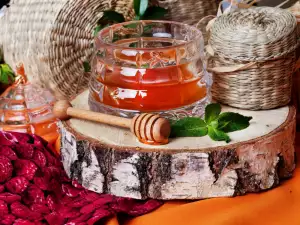





Comments